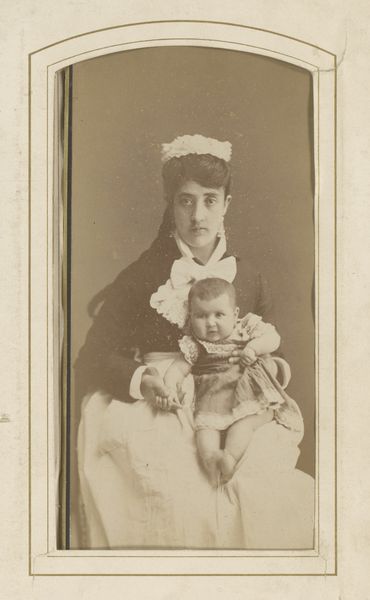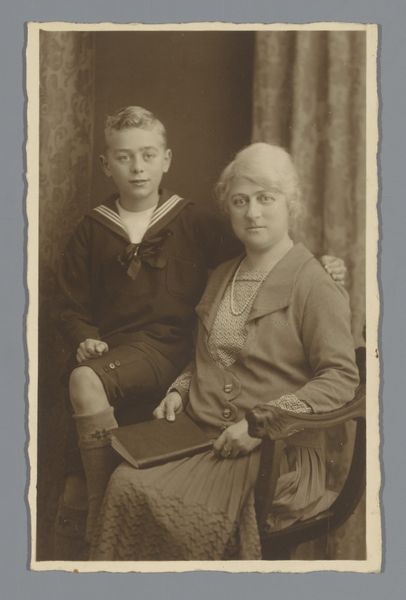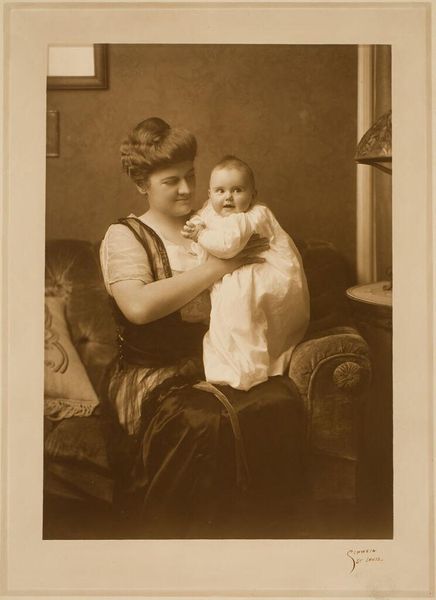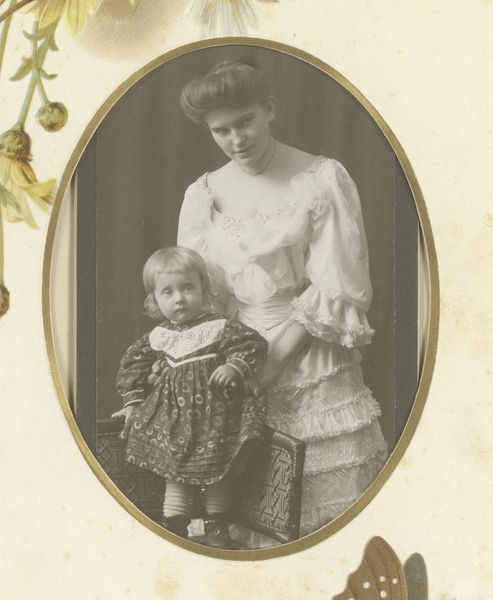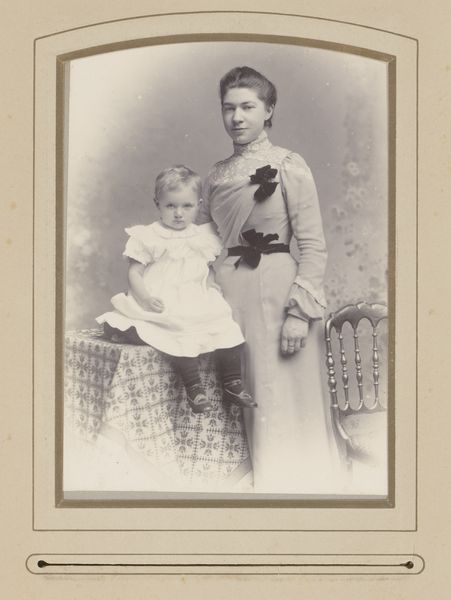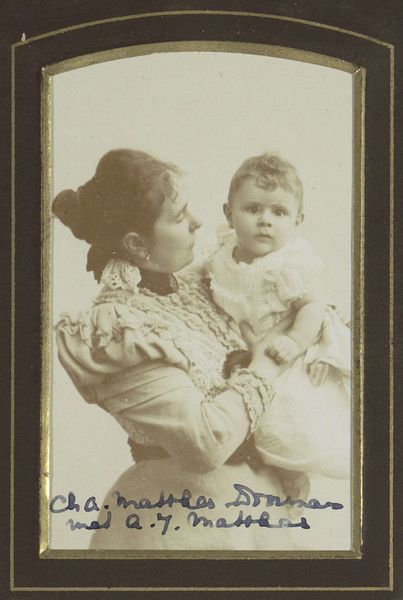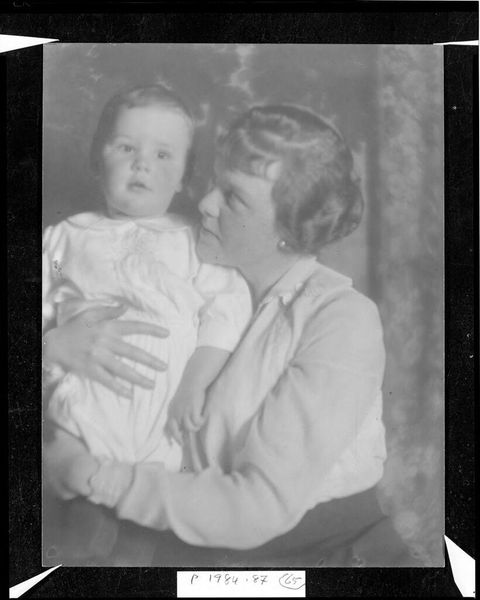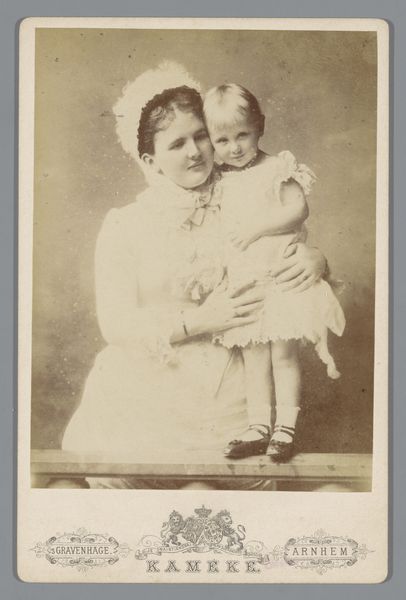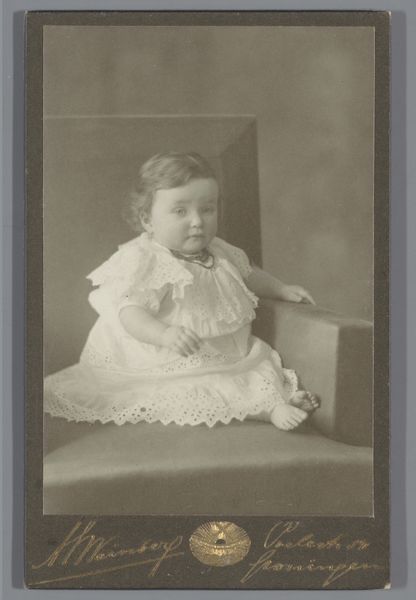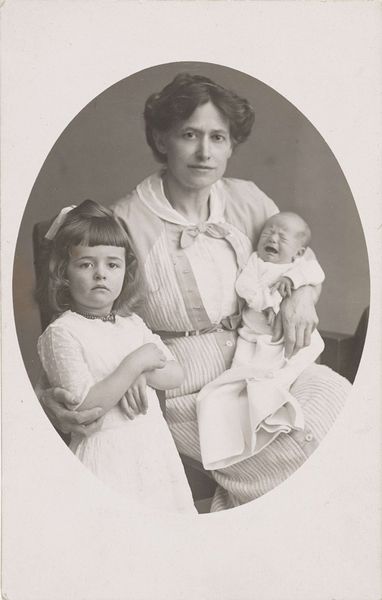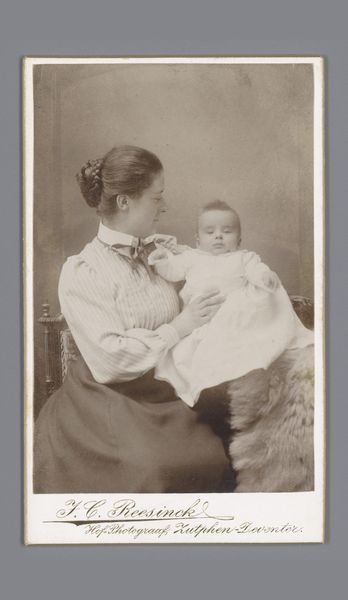
Portret van een onbekende vrouw met vermoedelijk haar kind c. 1881 - 1903
0:00
0:00
photography, albumen-print
#
portrait
#
mother
#
photography
#
historical photography
#
historical fashion
#
genre-painting
#
albumen-print
Dimensions: height 167 mm, width 107 mm
Copyright: Rijks Museum: Open Domain
Curator: This is a photographic portrait, believed to have been taken between 1881 and 1903. The title translates to "Portrait of an Unknown Woman, Presumably With Her Child," an albumen print now held at the Rijksmuseum. Editor: There's something so fragile and almost haunting about it, even before you get to the fact the subjects are unknown. The sepia tones lend a great deal to the photograph’s affecting melancholy. You see that kind of tonality faded through sunlight and time and think immediately about those conditions; in some way it mirrors the fact of the unknowns depicted slowly vanishing over the course of history. Curator: It's intriguing, isn’t it? The way these staged photographs functioned as displays of status and aspirations. The lace detailing, the brooch. Note how the mother’s dress and adornments almost visually bracket her son in starker colors. Editor: Yes, exactly. It speaks volumes, even beyond just a marker of class. It's about consumption, what they’re *doing* with materials, with presenting themselves for the emerging market in studio portraiture. The print itself – the production of it—that would have been part of the point. This image existing meant something very specific regarding social positioning. Curator: Consider the symbolism within such portraits too, especially the almost archetypal bond represented by a mother and child. The embrace speaks to an intimate, almost universal connection. Editor: An embrace both very *real* and simultaneously incredibly posed. You look at it now and understand how this photo has an afterlife, but you wonder if these individuals ever saw themselves reaching beyond a very prescribed understanding of representation? I would have been curious about who the printer was; about how materials and darkroom affected the composition, that interplay. Curator: We can imagine countless narratives for this mother and child, all framed within the social structures that both elevated and constrained them. Their anonymous state encourages that kind of consideration. Editor: Exactly; it's why they feel both specific to their moment and strikingly timeless. These small artifacts of consumption become profound reminders of our own transient moment, and the material circumstances that both define and betray our legacy.
Comments
No comments
Be the first to comment and join the conversation on the ultimate creative platform.
